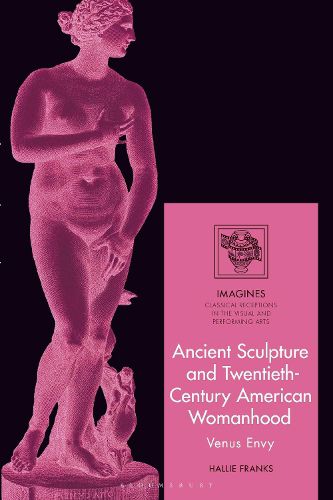Readings Newsletter
Become a Readings Member to make your shopping experience even easier.
Sign in or sign up for free!
You’re not far away from qualifying for FREE standard shipping within Australia
You’ve qualified for FREE standard shipping within Australia
The cart is loading…






This book examines the reception of Graeco-Roman sculptures of Venus and their role in the construction of the body aesthetics of the "fit" American woman in the decades around the turn of the 20th century. In this historical moment, 19th-century anthropometric methods, the anti-corset dress reform movement and early fitness culture were united in their goal of identifying and producing healthy, procreative female bodies. These discourses presented ancient statues of Venus - most frequently, the Venus de Milo - as the supreme visual model of a superior, fit, feminine physique. An America of such Venuses would herald the future prosperity of the "American race" by reviving the robust health and moral righteousness of the ancient Greeks.
Venuses had long been symbols of beauty, but the new situation of Venus statues as an aesthetic and moral destination for women set up a slippage between ideal sculpture and living bodies: what did it mean for a woman to embody - or to try to embody - the perfect health and beauty of an ancient statue? How were women expected to translate this model into flesh? What were the political stakes to which this vision of a nation of American Venuses was bound? Who was believed to conform to this ideal, and who was excluded from it? In taking on these questions, Franks engages with physical culture and dress-reform media, modern artwork that adapts Graeco-Roman traditions, anthropological texts, art histories of ancient Greece, film, advertising and medical reporting on women's health.
$9.00 standard shipping within Australia
FREE standard shipping within Australia for orders over $100.00
Express & International shipping calculated at checkout
This book examines the reception of Graeco-Roman sculptures of Venus and their role in the construction of the body aesthetics of the "fit" American woman in the decades around the turn of the 20th century. In this historical moment, 19th-century anthropometric methods, the anti-corset dress reform movement and early fitness culture were united in their goal of identifying and producing healthy, procreative female bodies. These discourses presented ancient statues of Venus - most frequently, the Venus de Milo - as the supreme visual model of a superior, fit, feminine physique. An America of such Venuses would herald the future prosperity of the "American race" by reviving the robust health and moral righteousness of the ancient Greeks.
Venuses had long been symbols of beauty, but the new situation of Venus statues as an aesthetic and moral destination for women set up a slippage between ideal sculpture and living bodies: what did it mean for a woman to embody - or to try to embody - the perfect health and beauty of an ancient statue? How were women expected to translate this model into flesh? What were the political stakes to which this vision of a nation of American Venuses was bound? Who was believed to conform to this ideal, and who was excluded from it? In taking on these questions, Franks engages with physical culture and dress-reform media, modern artwork that adapts Graeco-Roman traditions, anthropological texts, art histories of ancient Greece, film, advertising and medical reporting on women's health.